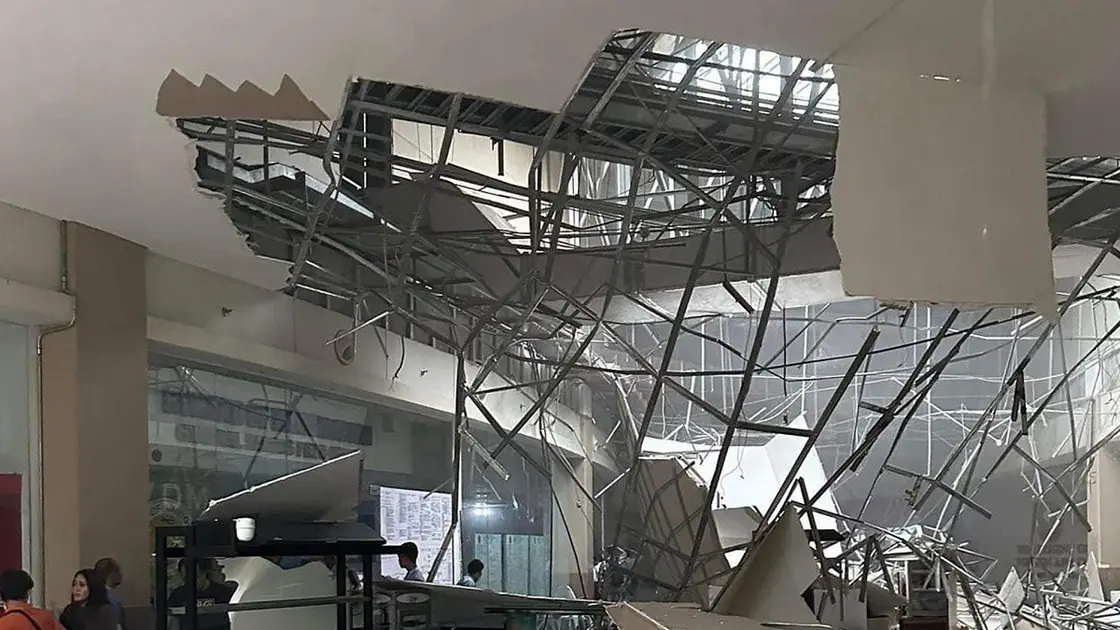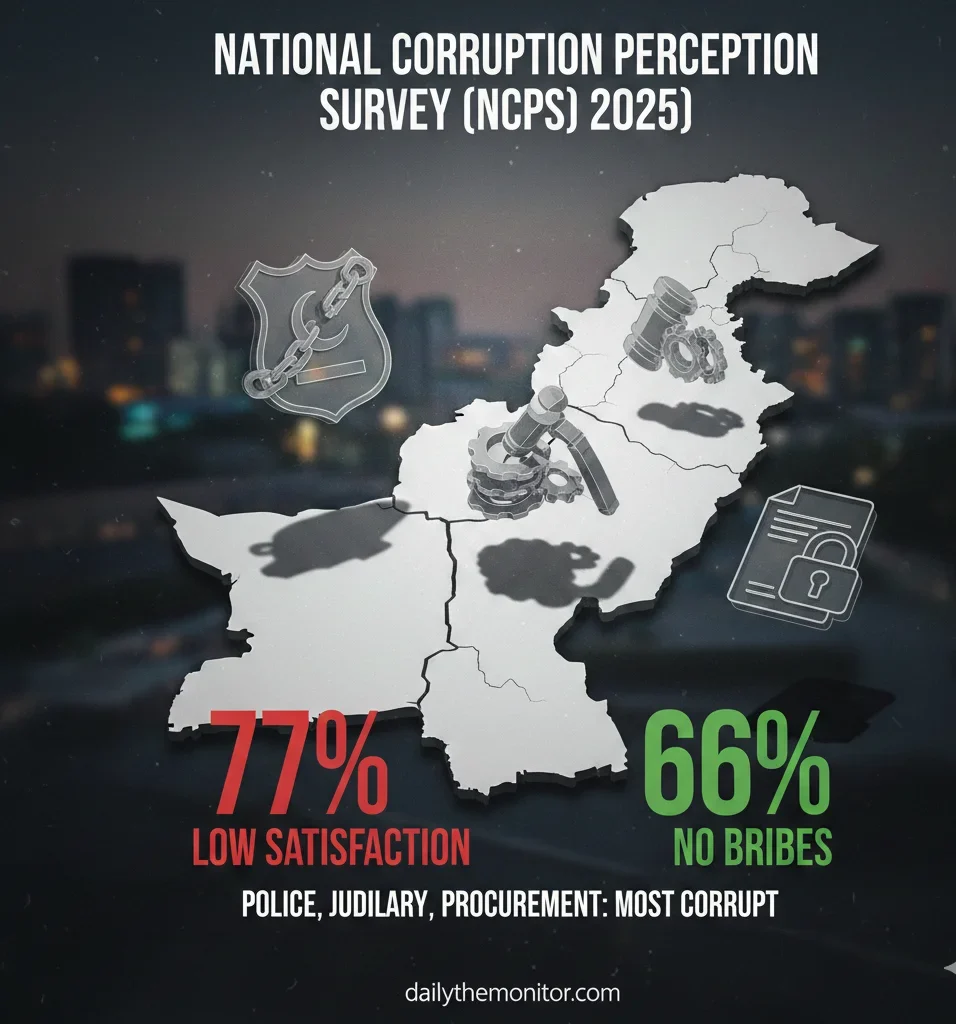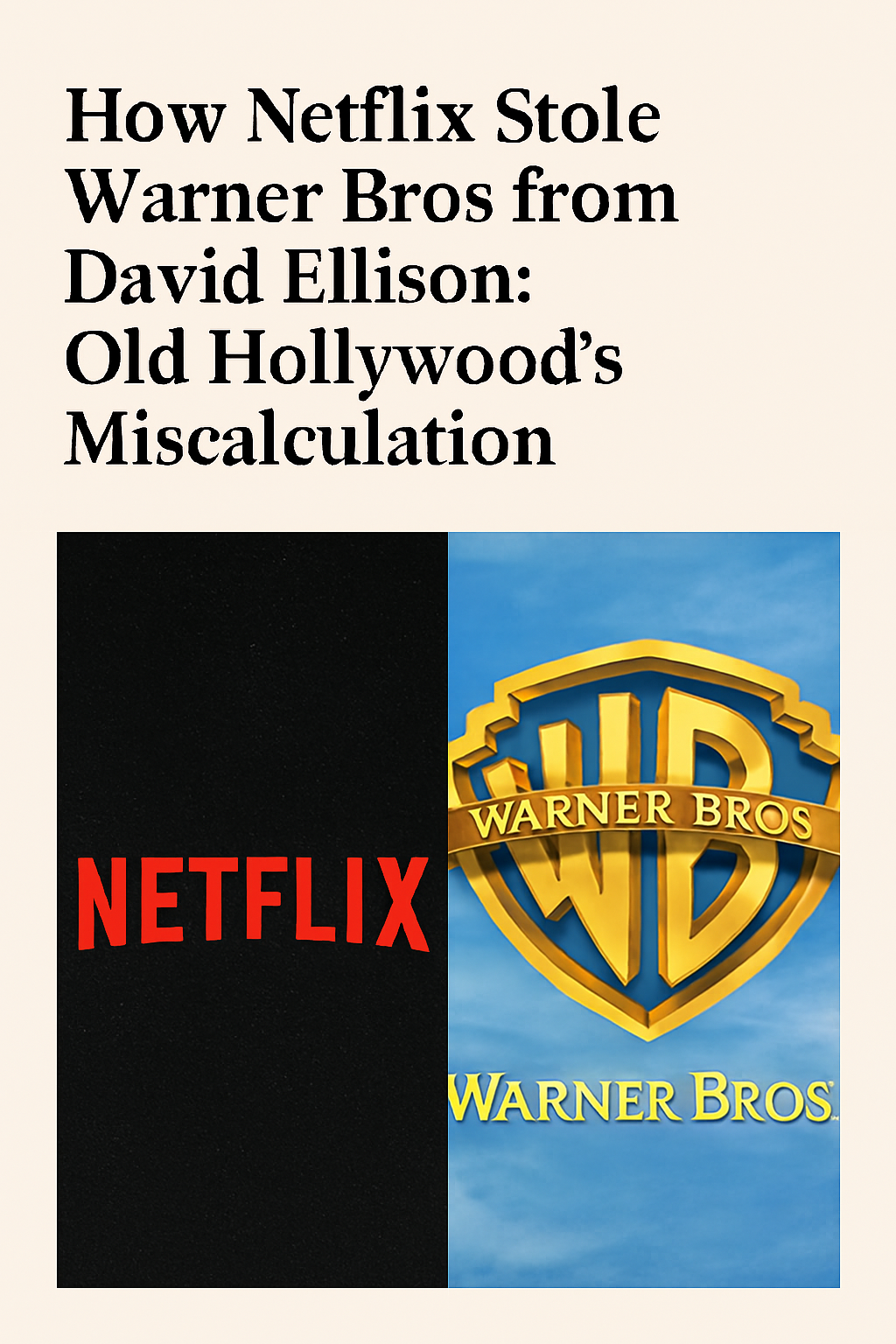News
Magnitude 6.7 earthquake rocks southern Philippines

Table of Contents
Introduction
On Friday, November 17, 2023, a powerful earthquake of magnitude 6.7 struck the southern Philippine region of Mindanao, causing damage to buildings and infrastructure, but no reports of casualties so far. The quake occurred at 10:32 a.m. local time (0232 GMT), about 16 kilometres (10 miles) southe-astuy of General Santos City, at a depth of 15 kilometres (9 miles), according to the German Research Center for Geosciences (GFZ) 1. The Philippine Institute of Volcanology and Seismology (PHIVOLCS) measured the quake at a slightly higher magnitude of 6.8 and warned of possible aftershocks and damage 2. The tremor was felt in several provinces in Mindanao, including Davao, Cotabato, Sarangani, and South Cotabato, where residents were advised to stay alert and avoid structures that may have been weakened by the quake 2. Some people evacuated shopping malls, schools, and offices in panic, while others posted photos and videos of the quake on social media.
Background
The Philippines is located on the Pacific Ring of Fire, a zone of frequent seismic activity due to the collision of tectonic plates. The country experiences an average of 20 earthquakes per day, most of them not felt 3. However, some of them are strong enough to cause significant damage and loss of lives. In February 2017, a magnitude 6.7 earthquake hit Surigao City in Mindanao, killing eight people and injuring more than 200 4. In October 2019, a series of strong quakes rocked Cotabato province in Mindanao, killing at least 22 people and displacing thousands 5. These earthquakes also triggered landslides, power outages, and water shortages in the affected areas.
Effects
The magnitude 6.7 earthquake that struck Mindanao on November 17, 2023, was tectonic in origin and caused by the movement of a local fault 12. The Pacific Tsunami Warning Center said a tsunami was not expected from the quake 1. However, the quake still caused considerable damage to the infrastructure and properties in the region. Amor Mio, police chief of Koronadal city, near the quake’s epicenter, said there were no reports of casualties but officials were checking a shopping mall reported to have been damaged 1. He added that some power lines and water pipes were also affected by the quake 2. The quake also disrupted the communication and transportation systems in some areas, making it difficult for the authorities and the relief agencies to assess the situation and provide assistance. The National Disaster Risk Reduction and Management Council (NDRRMC) said it was coordinating with the local government units and the military to conduct rapid damage assessment and needs analysis 6.
Response
The Philippine government and the international community have expressed their solidarity and support to the victims of the earthquake. President Rodrigo Duterte, who hails from Davao City, said he would visit the quake-hit areas as soon as possible and assured the public that the government would provide all the necessary assistance. He also appealed to the people to remain calm and cooperate with the authorities. The Department of Social Welfare and Development (DSWD) said it had prepositioned relief goods and personnel in the region and was ready to augment the resources of the local government units. The Department of Health (DOH) said it had deployed medical teams and supplies to the affected areas and was monitoring the health situation. The Department of Public Works and Highways (DPWH) said it had mobilized its personnel and equipment to clear the roads and bridges and restore the public services. The United Nations and its humanitarian partners said they were in contact with the government and were ready to provide support if requested. The International Federation of Red Cross and Red Crescent Societies (IFRC) said it had activated its disaster response teams and was working with the Philippine Red Cross to deliver aid and services to the affected communities.
Conclusion
The magnitude 6.7 earthquake that hit Mindanao on November 17, 2023, was one of the strongest quakes to hit the region in recent years. It caused damage to the infrastructure and properties, but fortunately, no fatalities were reported. The quake also highlighted the vulnerability of the Philippines to natural disasters and the need for disaster preparedness and resilience. The government and the humanitarian agencies have responded swiftly and effectively to the emergency and have provided relief and assistance to the affected population. The people of Mindanao have also shown their courage and solidarity in the face of adversity and have helped each other cope with the aftermath of the quake.
Discover more from The Monitor
Subscribe to get the latest posts sent to your email.
Biography
Tributes Pour In for Rob Reiner, 78, as Hollywood Mourns a Storyteller Who Shaped an Era

The death of filmmaker Rob Reiner at age 78 has prompted an outpouring of tributes across the entertainment world, as colleagues, actors, and cultural figures reflect on the legacy of a director whose work helped define modern American cinema. Reiner and his wife, Michele Singer Reiner, were found dead in their Los Angeles home, according to police statements released this week.
Reiner’s passing—under circumstances now the subject of an active homicide investigation—has sent shockwaves through Hollywood and beyond. Authorities confirmed that the couple’s son, Nick Reiner, has been taken into custody and “booked for murder,” though charges have not yet been formally filed. The Los Angeles Police Department has said the case remains open as detectives continue their inquiry.
Table of Contents
A Career That Spanned Generations
Rob Reiner’s influence on American storytelling is difficult to overstate. From the comedic brilliance of This Is Spinal Tap to the emotional resonance of Stand By Me, When Harry Met Sally, and A Few Good Men, Reiner’s films became cultural touchstones—quoted, revisited, and taught in film schools for decades.
His work blended humor with humanity, often exploring the fragile, complicated bonds between people. Reiner’s films were rarely just entertainment; they were emotional experiences that lingered.
Colleagues described him as a director with an uncanny ability to draw out vulnerability from actors while maintaining a light, collaborative set. “Rob had a way of making you feel safe enough to take risks,” one longtime collaborator said in a tribute posted shortly after news of his death broke.
A Loss Felt Across Hollywood
As news spread, tributes began flooding social platforms and industry circles. Actors who grew up watching his films shared memories of the first time they encountered The Princess Bride or Misery. Directors spoke of Reiner’s craftsmanship—his ability to move seamlessly between genres without losing his signature warmth.
Industry veterans noted that Reiner’s career bridged eras: from the golden age of network television, where he first gained fame on All in the Family, to the rise of prestige filmmaking in the 1980s and 1990s, and finally to the streaming era, where his classics found new audiences.
His death, many said, marks the end of a particular Hollywood lineage—one rooted in character-driven storytelling, emotional honesty, and a belief that films could be both deeply personal and universally resonant.
A Family Tragedy Under Public Scrutiny
The circumstances surrounding Reiner’s death have added a layer of heartbreak to the tributes. Police confirmed that both Reiner and his wife were found dead in their Brentwood home, and that their son Nick was arrested shortly thereafter. The case has drawn intense media attention, with officials urging the public to allow investigators space to complete their work.
Despite the grim backdrop, those who knew Reiner have focused their public statements on his life rather than the tragedy. “Rob Reiner changed the way America tells stories,” one filmmaker wrote. “His films helped us understand ourselves.”
A Legacy That Will Endure
Reiner’s influence will continue to ripple through Hollywood for generations. His films remain staples of American culture—quoted at weddings, referenced in political debates, and rediscovered by new audiences every year.
For many, the loss feels personal. Reiner’s work was woven into the fabric of everyday life: the comfort of a familiar line, the catharsis of a well-crafted scene, the joy of a story told with sincerity.
As Hollywood mourns, one truth is clear: Rob Reiner didn’t just make movies. He made memories.
Discover more from The Monitor
Subscribe to get the latest posts sent to your email.
Corruption
Transparency International Pakistan releases NCPS 2025

ISLAMABAD—Transparency International Pakistan (TIP) on Tuesday released its comprehensive National Corruption Perception Survey (NCPS) 2025, presenting a mixed picture of public sentiment on corruption, anti-graft efforts, and governance across the country.
The survey, conducted with 4,000 respondents from all four provinces, reveals that while a significant majority of citizens did not report paying a bribe in the last year, three key public sectors—the Police, Tender/Procurement, and the Judiciary—continue to be perceived as the most corruption-prone institutions.
Table of Contents
Police Top List Despite Perception Improvement
According to the NCPS 2025 findings, the Police remains the most corrupt sector in the eyes of the public, cited by 24% of respondents nationwide. This is followed by the Tender and Procurement process at 16%, and the Judiciary at 14%.
However, the report highlighted a subtle but “notable” positive shift in public perception regarding the Police, registering a 6% improvement in perceived behaviour and service delivery compared to the previous survey.
Low Bribery Rate vs. High Dissatisfaction
The survey’s most encouraging statistic is that a majority of citizens (66%) reported they did not feel compelled to pay a bribe for public services in the past 12 months, which TIP considers a strong indicator of perceived progress in service delivery. Provincially, Sindh reported the highest rate of citizens encountering a demand for a bribe at 46%.
Despite the low rate of personal bribery, public satisfaction with the government’s overall efforts to combat corruption remains low. A significant 77% of respondents nationwide expressed “low satisfaction” or were “not satisfied” with the government’s anti-corruption drive.
The public identified the three major causes driving corruption as a lack of accountability (15%), lack of transparency and limited access to information (15%), and delays in the disposal of corruption cases (14%).
Demand for Accountability of Anti-Graft Bodies
The survey findings reflect a strong public demand for institutional reform and accountability. An overwhelming 78% of Pakistanis believe that anti-corruption institutions like the National Accountability Bureau (NAB) and the Federal Investigation Agency (FIA) should themselves be more accountable and transparent.
Citizens also proposed a blueprint for curbing corruption, prioritising:
- Enhancing accountability (26%)
- Limiting discretionary powers (23%)
- Strengthening Right to Information laws (20%)
The report also found a notable lack of awareness regarding reporting channels, with 70% of citizens being unaware of any official corruption reporting mechanism. Furthermore, 42% stated they would feel safe reporting corruption only if strong whistleblower protection laws were in place.
Economic Stability and Political Finance
On economic matters, approximately 58% of respondents indicated that the government has either fully or partially stabilised the economy, crediting the International Monetary Fund (IMF) programme and the country’s exit from the Financial Action Task Force (FATF) Grey List. However, 57% reported a decline in their purchasing power over the past year.
The survey also highlighted a strong public desire for clean electoral financing, with a combined 83% of respondents supporting either a complete ban or strict regulation of business funding to political parties.
In response to the report, Prime Minister Shehbaz Sharif welcomed the survey, stating that the large number of respondents who reported not encountering corruption during his government reflects the public’s recognition of the reforms aimed at transparency and economic recovery.
For more details on the survey’s public opinion findings, watch this report: Transparency International Report on Corruption – Public Opinion – 9 Dec 2025.
Discover more from The Monitor
Subscribe to get the latest posts sent to your email.
Entertainment
How Netflix Stole Warner Bros from David Ellison: Old Hollywood’s Miscalculation

For two decades, Netflix has been dismissed as a disruptor that would eventually plateau. Legacy Hollywood believed its dominance was temporary, a fad that would fade once the old guard flexed its muscle. Yet in 2025, the streaming pioneer pulled off a coup that stunned the industry: Netflix outmanoeuvred David Ellison’s Skydance and secured Warner Bros, rewriting the rules of entertainment economics.
Table of Contents
Macro Context: Streaming’s Rise and Hollywood’s Decline
The streaming wars have reshaped the global media landscape. Netflix, once a DVD‑by‑mail service, now commands billions in revenue and a subscriber base that dwarfs traditional cable. Meanwhile, legacy studios like Warner Bros Discovery struggled under debt, fragmented audiences, and outdated business models.
David Ellison’s Skydance, backed by ambition and capital, seemed poised to rescue Warner Bros. Yet Netflix’s strategic patience, global reach, and ability to monetise content across platforms proved decisive.
David Ellison’s Bid: Ambition Meets Reality
Ellison’s attempt to acquire Warner Bros was emblematic of Hollywood’s old guard—ambitious, well‑funded, but ultimately constrained by legacy thinking. Skydance’s merger talks with Paramount highlighted Ellison’s vision of building a modern studio empire. But when it came to Warner Bros, Netflix’s agility and scale proved insurmountable.
- Skydance Strategy: Focused on blockbuster franchises and traditional studio models.
- Netflix Strategy: Leveraged global subscriber data, AI‑driven content recommendations, and diversified revenue streams.
- Outcome: Ellison underestimated Netflix’s ability to play the long game.
Warner Bros: A Legacy Studio Recast
Warner Bros, once synonymous with Hollywood glamour, became a symbol of industry decline. Debt burdens, misaligned leadership, and fragmented IP portfolios left it vulnerable. Netflix’s acquisition was not just a business deal—it was a cultural takeover.
By absorbing Warner Bros, Netflix gained access to iconic franchises, a century of cinematic heritage, and a foothold in theatrical distribution. More importantly, it signaled that streaming had officially eclipsed legacy Hollywood.
Opinion: Why Old Hollywood Misread Netflix
As a senior columnist, I argue that Hollywood underestimated Netflix’s long game. For years, executives dismissed streaming as secondary to theatrical releases. They failed to grasp that Netflix was not just a content distributor—it was a data‑driven entertainment ecosystem.
Netflix’s ability to predict audience behavior, scale globally, and monetize IP across formats gave it an edge Ellison and others could not match. The Warner Bros deal is proof that the future belongs to platforms that combine technology with storytelling.
Conclusion
Netflix’s acquisition of Warner Bros is more than a headline—it’s a turning point. David Ellison’s failed bid underscores the limits of old‑guard Hollywood thinking. The lesson is clear: streaming is not the future, it is the present.
For policymakers, investors, and audiences, the message is unmistakable: Netflix didn’t just buy Warner Bros—it rewrote the rules of Hollywood.
Discover more from The Monitor
Subscribe to get the latest posts sent to your email.
-

 Featured5 years ago
Featured5 years agoThe Right-Wing Politics in United States & The Capitol Hill Mayhem
-

 News4 years ago
News4 years agoPrioritizing health & education most effective way to improve socio-economic status: President
-

 China5 years ago
China5 years agoCoronavirus Pandemic and Global Response
-

 Canada5 years ago
Canada5 years agoSocio-Economic Implications of Canadian Border Closure With U.S
-

 Conflict5 years ago
Conflict5 years agoKashmir Lockdown, UNGA & Thereafter
-

 Democracy4 years ago
Democracy4 years agoMissing You! SPSC
-

 Democracy4 years ago
Democracy4 years agoPresident Dr Arif Alvi Confers Civil Awards on Independence Day
-

 Digital5 years ago
Digital5 years agoPakistan Moves Closer to Train One Million Youth with Digital Skills





















